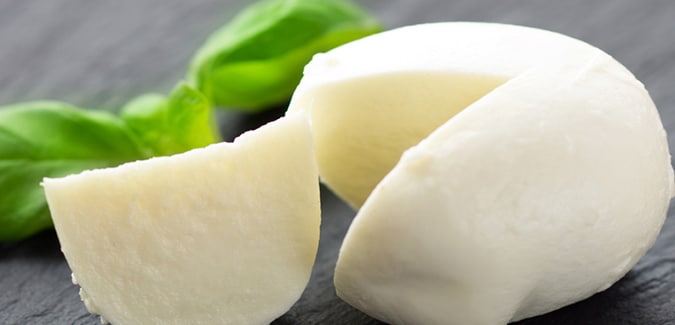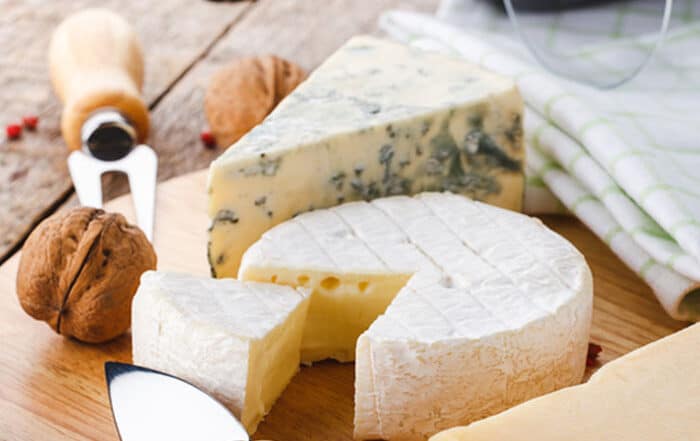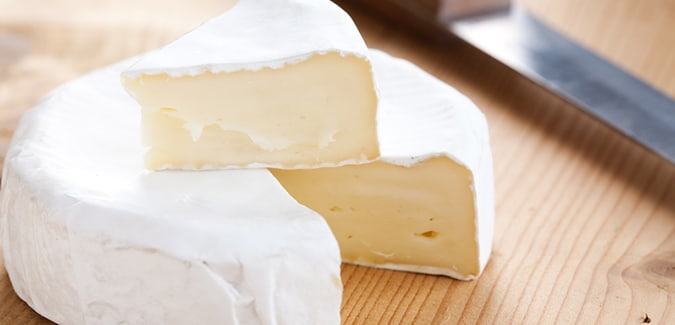Unlocking the Nutritional Benefits and Versatility of Cheese
Cheese is a dairy food that’s easy to love—it’s flavorful, rich, and absolutely delicious. Its versatility only increases its appeal. You can enjoy a few cubes as a simple snack or arrange various types of cheese beautifully with fruits, vegetables, meats, and bread on a cheese board. It’s also the perfect addition to your family’s favorite meals, like tacos, pizza, salad, and well, almost anything.
Did you know that eating cheese can help you meet general daily nutrition recommendations and help close the gap on a nutrient that many people are missing in their diets? It’s true!
Most cheeses are a good or excellent source of calcium – a nutrient of concern for most Americans according to the current Dietary Guidelines for Americans. Adding reduced-fat cheese to meals will not only increase the amount of calcium, but other essential nutrients as well, such as phosphorus, vitamin A and high-quality protein!
It’s important to note that cheese can fit into most healthy eating plans, and with over 300 varieties to choose from, there is surely something to satisfy everyone’s taste! Even those with lactose intolerance can enjoy the health benefits of dairy in the form of cheese, by choosing natural, harder cheeses like Cheddar, Colby, Swiss and Monterey Jack.

There’s no doubt that the flavor of your favorite meals, along with your health, can be enhanced with the addition of low-fat or reduced fat cheese. So, go ahead – enjoy!
Exploring Cheese Facts
Check out these fascinating facts about cheese:
- It takes almost 10 pounds of milk to make 1 pound of cheese.
- Cheese is the No. 2 source of dietary calcium for Americans.
- Natural cheese is made from just four basic ingredients: milk, salt, starter culture (“good bacteria”) and an enzyme called rennet.
- Cheese may help children eat more fruits, vegetables and whole grains because its great taste distracts youngsters from foods they aren’t as fond of!
So sprinkle, melt or cube your favorite cheese and enjoy!
Cheese Nutrition
From a nutrition standpoint, cheese is a nutrient-rich food that supplies protein, calcium, phosphorus, and vitamin A. For vegetarians, cheese and other dairy foods are important sources of high-quality protein. Three servings of low-fat and fat-free dairy foods, including cheese, are recommended for individuals age nine and up as part of the Healthy Eating Patterns with the current Dietary Guidelines for Americans (DGA).
Cheese can also be a vital source of dairy nutrients for people with lactose intolerance. Natural cheeses like cheddar, mozzarella, Swiss, Colby, and Monterey Jack are low in lactose and are generally able to be eaten without gastrointestinal issues.
History of Cheese
According to historians, people began making cheese in Northern Europe as much as 7,500 years ago. Natural cheese is made from four basic ingredients, including milk, salt, a good bacteria, and rennet, an enzyme. Cheese makers around the world have taken those four starter ingredients and created thousands of varieties of cheese, each one with a unique taste and texture. No two cheeses are exactly the same, but there are many standard types that we’ve come to know and love over the years.
It’s believed that the Pilgrims brought cheese on the Mayflower during their voyage to America. Once they landed, many of those who opened dairies produced cheese, but it wasn’t until 1851 that the first cheese factory in the United States opened.
Varieties of Cheese
Wondering what some of the thousands of varieties of cheese out there are? Here’s a closer look at common and easily accessible cheeses, with examples from each category.
Blue Cheese
Blue cheeses, like blue and gorgonzola, are known for the blue and green streaks that are swirled throughout. Fun fact: This unique coloring and appearance comes from the harmless, flavor-producing mold used to make it. Blue cheeses have a texture that ranges from creamy to crumbly.
Hard/Semi-Hard Cheese
Hard and semi-hard cheeses, a group that includes cheddar, Parmesan, Gouda, and Gruyère, vary from semi-firm to very firm in texture and are aged anywhere from a few weeks to several months or more. The dry texture and low moisture content of hard cheeses helps them retain their shape for easy slicing.
Soft/Semi-Soft
These cheeses, such as Brie and Havarti, often have a soft texture and high moisture content with a flavor profile that ranges from mild to full, based on how long they have aged.
Fresh
The cheeses in this group are typically by adding lactic acid cultures to milk. They have a soft texture, high moisture content, and a shorter shelf life. Ricotta and cottage cheese are examples of fresh cheese that can be eaten alone but are often added to recipes.
Pasta Filata
Pasta filata cheeses, like mozzarella and string cheese, are named for the unique process of pulling the curds while they are dipped in hot water. Once the curd has been heated and stretched, it is molded. In the case of mozzarella-style cheese, the molded cheese is immersed in cold water, cooled in brine, and packaged.
Now that you know more about cheese, have fun experimenting with the unique flavors and textures of any new-to-you types to identify your favorites. Perhaps you want to create a vibrant cheese board and invite some friends over to partake in the fun!






